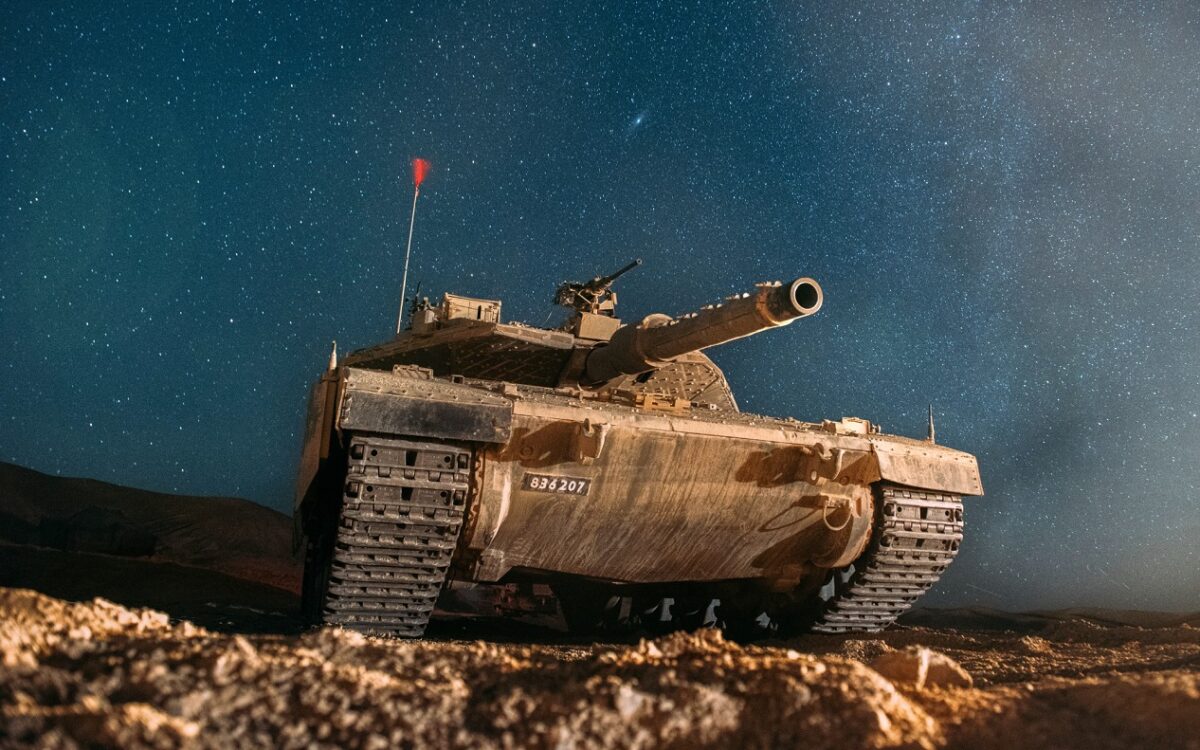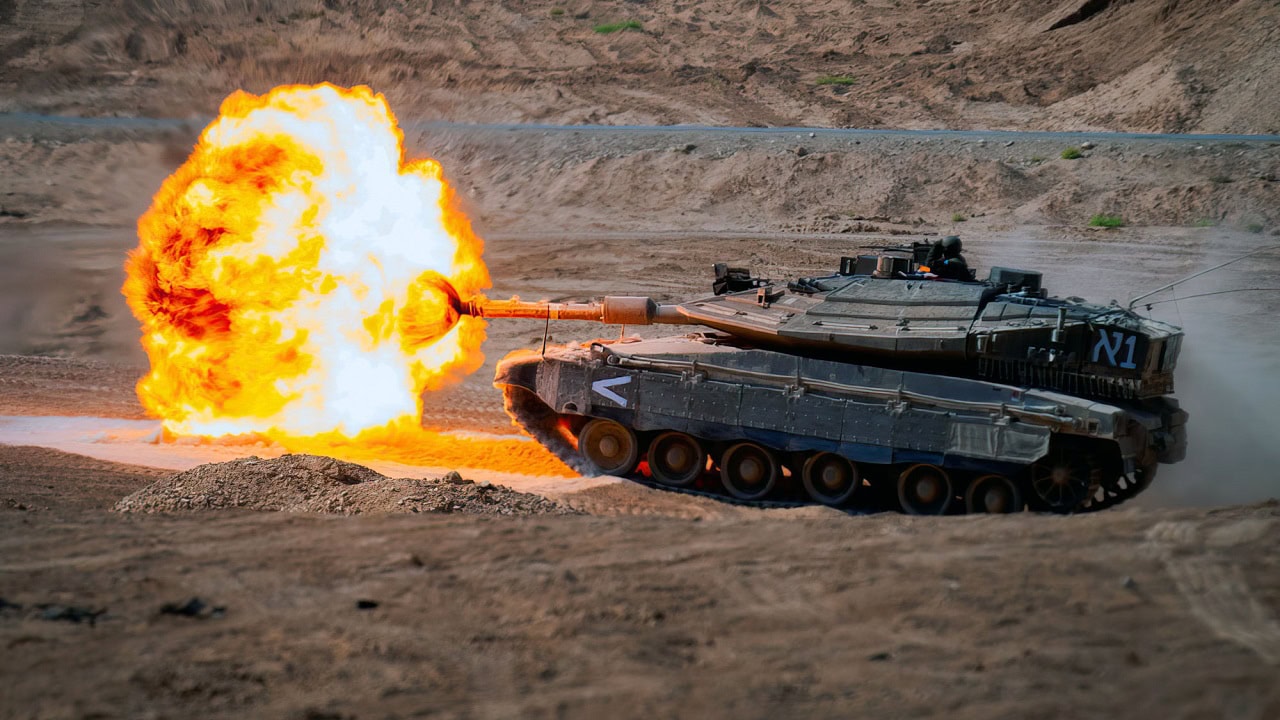Meet the Merkava: Largely touted as one of the world’s greatest tanks, Israel’s Merkava “Chariot” projects power and strength on the battlefield. While the American-made M1 Abrams and Russian-made T-14 main battle tanks may elicit more widespread recognition, the Israeli-designed Merkava is truly unparalleled in its capabilities. Since its founding in 1948, Israel’s Defense Forces (IDF) have proven to be a formidable body, successfully defending itself in countless battles with its hostile neighbors. Without its effective and sophisticated armored corps, the IDF would be vulnerable to ground assaults from every border Israel faces. Perhaps the mainstay of its armored corps, the Chariot tank deserves more recognition than it currently gets.
What We Know: Designed and Made in Israel
The Merkava battle tank is indigenously-made in Israel, a huge feat for such a small country. The Chariot’s design was catalyzed in part by Israel’s need for an advanced armored vehicle, Israel also pursued domestic production due to the Jewish state’s inability to rely on foreign importers.
The tank was produced in the Merkava and Armored Combat Vehicles Division of the Israeli Ministry of Defense in the early 1970s, following the 1967 Six-Day War. During this brief battle, Israel’s Armored Corps effectively utilized American M-48 and British Centurion tanks to capture control of the Sinai Peninsula. The IDF’s success in its preemptive strike, however, pushed the United Kingdom to reconsider its sales to Israel. In addition to not wanting to provoke more conflict in the Middle East, the UK wished to protect its economic interests tied to several Arab states. Therefore, the UK reversed the joint tank-agreement initiative it had previously signed with the Jewish state that would have provided the IDF with its Chieftain tanks.
The UK’s Chieftain reversal led the then-Commander of the IDF Armored Corps, Maj. Gen. Israeli Tal, to pursue a domestic solution to Israel’s tank problem. Tal recognized that since Israel’s land-based protection could not be guaranteed by foreign entities, a homegrown battle tank had to become a priority. Additionally, the IDF had to produce a near-peer counterpart to the Soviet tanks being used by its Arab neighbors. Crew safety and survivability represented the driving factors behind the Merkava design and layout. The first Merkava Mk I entered service in 1979, hosting an unorthodox design. Equipped with a frontal-facing engine, the Merkava was laid out differently than other modern tanks which typically sported engines at the rear. The tank also featured thick-spaced armor to better protect its crew.
Merkava on the Move
While the original Merkava design was advanced in many ways, its mobility was its downside. With a top speed of just twenty-eight miles an hour, the Merkava was significantly slower than the American-made M1-Abrams, which could travel at speeds up to forty-five miles an hour. Since crew protection remained Israel’s top priority for the IDF’s Armored Corps, the tank’s mobility became perhaps its greatest flaw. However, Israel is a very small country, so achieving top speeds was not as necessary.
The Armored Corps first used the Merkava battle tank in combat during the 1982 Lebanon War. While the tanks were useful, the M113 armored personal carriers (APCs) the tanks were deployed with proved to be disastrous. Ultimately, the M113 APCs were withdrawn from combat, and the Armored Corp modified the Merkava platform into both APCs and armored ambulances.
The tank’s overall performance on the battlefield is detailed by Military Watch Magazine “While the Merkava proved a highly successful design, surpassing the capabilities of its Western analogs as well as the T-62, they suffered losses when deployed against the latest Soviet tank platforms – the T-72 operated by the Syrian military. This new Soviet platform, widely in service until today and one of the most effective battle tanks ever designed, was referred to by Syrian President Hafez Al Assad as ‘the best tank in the world’ as a result of its success during the Lebanon War.”
Israel’s Chariot Rides On
Although the Merkava’s performance was not perfect in the Lebanon War, the Israelis considered the indigenous design a success. Since its initial inception, several variations of the Merkava have made the battle tank more lethal and formidable.
The Merkava IV is the newest variation of the tank and is equipped with arguably the best asset protection any platform possesses in Israel’s Armored Corps. Using cutting-edge technology, the Trophy active protection system defends the Merkava IV against anti-tank missiles and rocket-propelled grenades. The Trophy defense system has allowed the IDF to carry out more thorough offensive missions since it better protects the lives and survivability of its crew and platform.
In 2014, a seven-week-long conflict broke out between Israel and Hamas following the kidnapping and abduction of three Israeli teenagers in the West Bank. Throughout Israel’s military operation dubbed Operation Protective Edge, the Trophy-equipped Merkava IV battle tanks effectively aided the IDF in its mission to locate and destroy Hamas’ terror tunnel network. Despite the dangerous positioning of the tanks along underground tunnel routes, the Merkavas successfully intercepted dozens of anti-tank missiles and RPGs, ultimately protecting the platforms and the IDF’s mission goals.

Israeli Merkava Tank. Image Credit: Creative Commons.

Merkava Tank
The possession of advanced and lethal Armored Corps capabilities is paramount to the Jewish state’s security. The Merkava IV battle tank can thwart oncoming fire while providing a protected space for its crew, enabling both defensive and offensive operations to occur. Israel’s specific positioning, surrounded by hostile adversaries, makes the battle tank one of the IDF’s most critical platforms.
Maya Carlin is a Middle East Defense Editor with 19FortyFive. She is also an analyst with the Center for Security Policy and a former Anna Sobol Levy Fellow at IDC Herzliya in Israel. She has by-lines in many publications, including The National Interest, Jerusalem Post, and Times of Israel.

